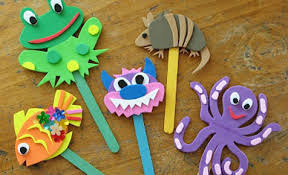Demonstration in Teaching
(Good Demonstration is Good Communication)
- In demonstration, you have to use both verbal and action communication for your learners to understand what you are taking and what you are showing to them. But a good demonstrator must present or show how a specific thing is done while following it up an explanation. It is best for your learners to see it in actual or to do it while showing showing it, for them to really understand it. To be a good demonstrator you have to make your demonstration lively and interesting to get the attention of your audience so that, they would be able to participate. Once they have been participated with communication between you and your audience.
DEMONSTRATION
- Is showing how a thing is done emphasizing the salient merits, utility and efficiency of concept, a method or a process or an attitude.
- Demonstration is a method of presentation of skill which shows a particular procedure is performed.
- Demonstration increases interest of students and persuades them to adopt recommended practices.
- A good demonstrator is an audio-visual presentation. It is not enough that the teacher talks. To be effective, his/her demonstration must be accompanied by some visuals.
Guiding principles that we must observe in using demonstration as a teaching-learning experience: Edgar Dale (1969)
- Establish rapport.
- Avoid COIK fallacy (Clear Only If Known)
- Watch for key points.
Planning and Preparing for Demonstration Brown (1969)
- What are our objectives?
- How does your class stand with respect to these objectives?
- Is there a better way to achieve your ends?
- Do you have access to all necessary materials and equipment to make the demonstration?
- Are you familiar with the sequence and content of the proposed demonstration?
- Are the time limits are realistic?
Several points to observe in the actual conduct of demonstration: Dale (1969)
- Set the tone for good communication.
- Keep your demonstration simple.
- Do not wander from the main ideas.
- Check to see if your demonstration is being understood.
- Do not hurry your demonstration.
- Do not drag out your demonstration.
- Conclude with a summary.
- Hand out written materials at the conclusion.
What questions can you ask to evaluate your classroom demonstration? Dale (1969)
- Was your demonstration adequately and skillfully prepared?
- Did you follow the step-by-step plan?
- Was the demonstration itself correct?
- Did you keep checking to see that all your students where concentrating on what you were doing?
- Could every person see and hear?
- Did you help students do their own generalizing?
- Did you take enough time to demonstrate the key points?
- Did you review and summarize the key points?
- Did your students participate in what you were doing by asking thoughtful questions at the appropriate time?
- Did your evaluation of student learning indicate that your demonstration achieved its purpose?












